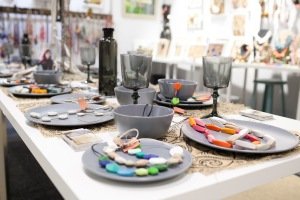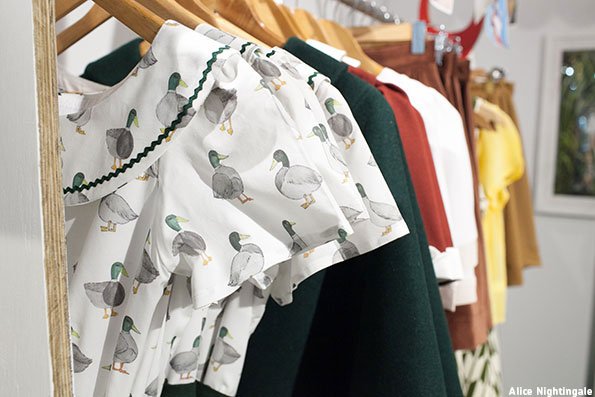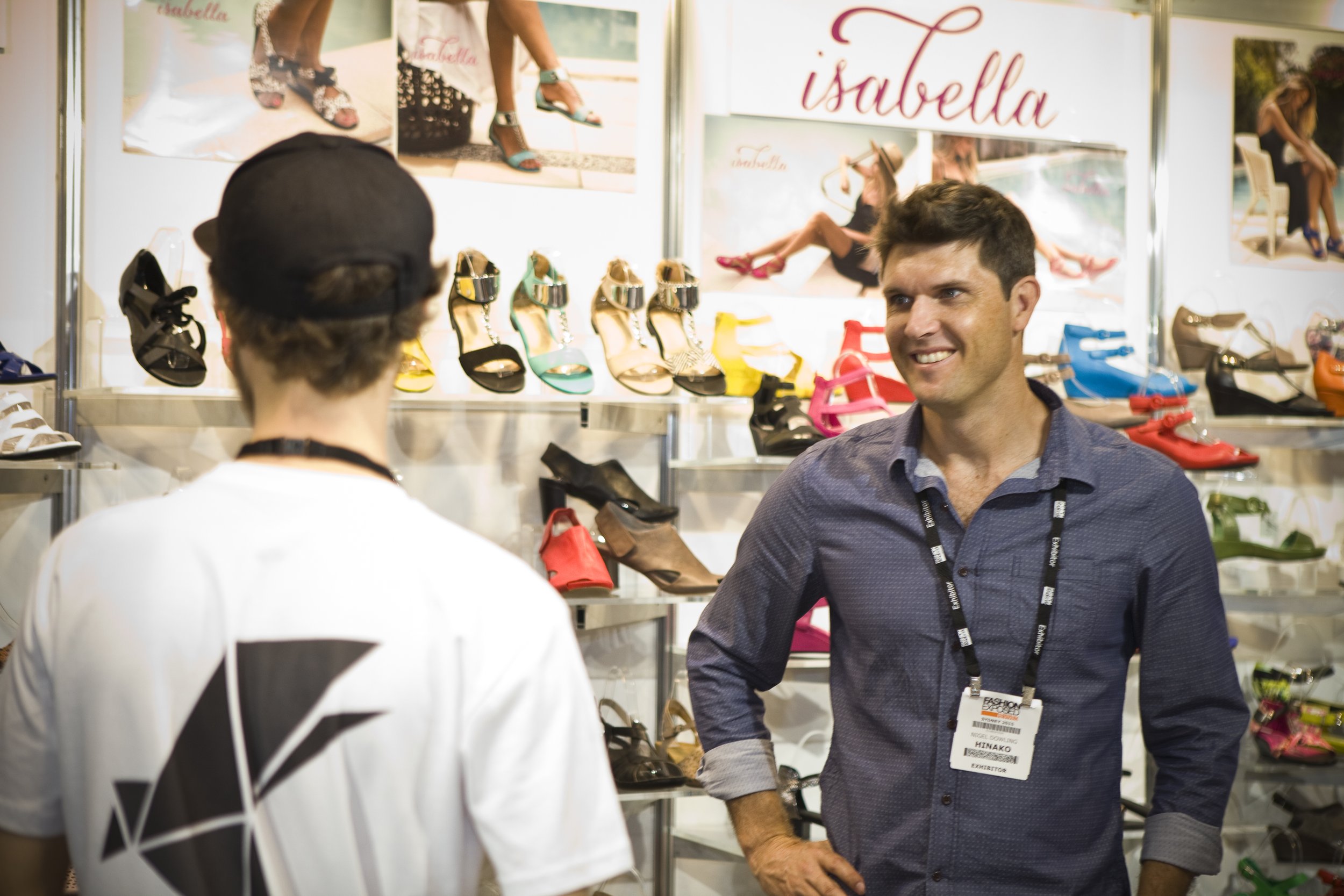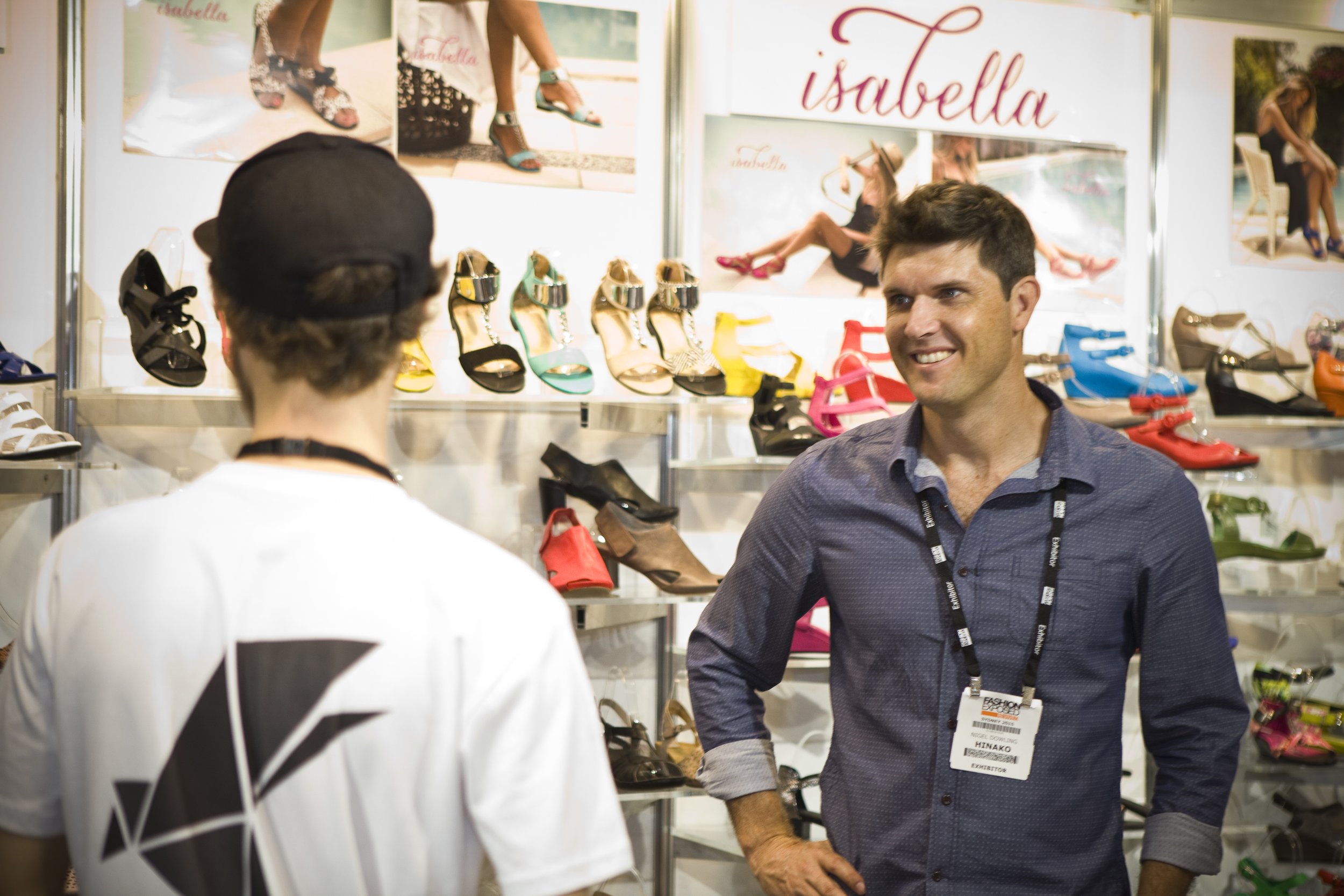 The Australian Retail Index, powered by leading audit, tax and advisory firm BDO, reported that the fashion sector performed best in the recent Easter retail sales slump.Compared to previous drops of up to 10%, the index reported an improved 1.28% drop in pre-Easter 2015 sales, making it the lowest drop fashion retailers have seen in four years.Unfortunately, these encouraging statistics were not consistent across the entire retail sector, which saw a 5% drop after the Easter weekend followed by a staggering 15% decline the following week.However, BDO national retail lead partner Simon Scalzo reassured retailers that this slump is not unusual for this time of year.“The drops followed gains across February and March, and are typical of Easter sales patterns with retailers being affected by two public holidays and the short school holiday period. During the Easter holidays, Australians are less likely to be purchasing large ticket items at this time of year."Scalzo reassured retailers that there could be relief in sight for some retail sectors, with pre-Mother’s Day typically seeing a spike in sales.“In the week leading up to Mother’s Day 2014, fashion and accessories sales jumped more than 21% and other general retail about 20%. Overall that week saw sector-wide sales up almost 15%, with 2013 sales about 13% higher.” The Australian Retail Index at www.australianretailindex.com.au provides week-by-week sales monitoring, across four key categories – fashion & accessories, furniture & homewares, sporting & recreational goods and other general retail. It sources weekly card-based, cash sales and lay-by sales data.
The Australian Retail Index, powered by leading audit, tax and advisory firm BDO, reported that the fashion sector performed best in the recent Easter retail sales slump.Compared to previous drops of up to 10%, the index reported an improved 1.28% drop in pre-Easter 2015 sales, making it the lowest drop fashion retailers have seen in four years.Unfortunately, these encouraging statistics were not consistent across the entire retail sector, which saw a 5% drop after the Easter weekend followed by a staggering 15% decline the following week.However, BDO national retail lead partner Simon Scalzo reassured retailers that this slump is not unusual for this time of year.“The drops followed gains across February and March, and are typical of Easter sales patterns with retailers being affected by two public holidays and the short school holiday period. During the Easter holidays, Australians are less likely to be purchasing large ticket items at this time of year."Scalzo reassured retailers that there could be relief in sight for some retail sectors, with pre-Mother’s Day typically seeing a spike in sales.“In the week leading up to Mother’s Day 2014, fashion and accessories sales jumped more than 21% and other general retail about 20%. Overall that week saw sector-wide sales up almost 15%, with 2013 sales about 13% higher.” The Australian Retail Index at www.australianretailindex.com.au provides week-by-week sales monitoring, across four key categories – fashion & accessories, furniture & homewares, sporting & recreational goods and other general retail. It sources weekly card-based, cash sales and lay-by sales data.
Maximising sales success
As most of you are aware the Australian Gift and Homewares Association (AGHA) purchased FASHION EXPOSED REVIVED and the recent trade show came together with the Sydney 2015 Home and Giving Fair. The amalgamation of both events saw a 10.5% visitation growth rate, bringing AGHA Wholesale Members the opportunity to exhibit their products across 32,000 square metres of exhibition space, and retailers many more buying choices. Regardless of the category you trade in, it is important to understand that early preparation will go a long way to increase sales results at a trade show or in a retail environment.If you are exhibiting at a trade show, the organisers will bring buyers to the front door. If you have a retail store, then the centre management will do what they can, but how do you draw buyers to your exhibition stand or store? And how do buyers choose which stand or store they want to visit in advance? Our tips below will help you start to think of ideas to maximise sales. 1. Be a visual stand outUse themes suitable to your product. Do you want to be bright, fun, elegant or casual? What style defines your label and how are you going to visually bring it to life? Think flowers, fruits, furniture, toys, snacks, mannequins, balloons, posters, models and dress according to your theme. This doesn’t have to be a costly exercise, you can plan ahead and put your creative mind to play. Have fun!Sydney FASHION EXPOSED REVIVED had some wonderful creative examples. In a competitive jewellery environment, Zatini displayed their accessories in a dining table setting feature, in which the jewellery was displayed as though it was food, it stood out and made people stop.
1. Be a visual stand outUse themes suitable to your product. Do you want to be bright, fun, elegant or casual? What style defines your label and how are you going to visually bring it to life? Think flowers, fruits, furniture, toys, snacks, mannequins, balloons, posters, models and dress according to your theme. This doesn’t have to be a costly exercise, you can plan ahead and put your creative mind to play. Have fun!Sydney FASHION EXPOSED REVIVED had some wonderful creative examples. In a competitive jewellery environment, Zatini displayed their accessories in a dining table setting feature, in which the jewellery was displayed as though it was food, it stood out and made people stop.
 4. You are the expertWhile you have customers in your territory, talk to them in depth about your products. Have a document with information on what sets you apart for them to take away. Is it the variety of styles or colours, the design, the materials or fabric you use or the value for money you offer, why should they be buying from you versus your competition?If you are a wholesaler why not give out USBs with information necessary to place an order after the show and include information on your products that will help retailers sell it to customers. If you are a retailer, know the products you supply well and pass this information on to consumers. Send them away with all the knowledge in the industry that you trade in.5. Market yourself before, during and afterYou are investing in a trade show or a retail space, promote yourself starting as soon as possible. If the organiser of a trade show is excited, get your buyers excited. If you are a retailer and there is an event that will bring an influx of customers – share the optimism and the news with your customers in advance. Create a Communications Plan that includes direct mail, email marketing, social media and utilise existing platforms you have available.Make appointments; the most successful exhibitors don’t rely on the organiser alone and the event in itself, they communicate with their database in advance, book appointments and tell buyers reasons they should visit. If you are a retailer, make use of quiet time to market yourself. Is it a product launch, access to stock before others, limited edition or limited quantity garments? Treat your VIPs to VIP treatment, but they key is to communicate, monitor social media and connect with them regularly to make your brand or store visible and top of mind.Communicate post-sale, handle any objections or feedback and bring new strategies to life. Build your social media network with new contacts, make the best use of the leads you receive. Know that a marketing campaign brings you approximately a third of leads and the rest should be sourced by a sales person. Now that you have met a potential customer make what would be a cold call a warm call and start to establish a relationship!6. Make the most of it!A retail space and especially a trade show is more than an opportunity to sell. It is your chance to be seen, be the business owner, the president, the label, the designer, the model – bring your business to life. Promote new products, talk about your future stock, business plans, ambitions, build industry contacts and relationships, see what your competitors are doing, and get on the spot feedback from your customers that will help future business decisions that lead to more successful results. Don’t get comfortable, the best results are achieved with the best use of time management and this includes the best use of quieter times in preparation for busy periods.We hope that you find these tips useful for your store or in preparation for future trade shows.Feel free to leave comments or share any tips of your own.Remember all your businesses are different, and so are your customers. Cater to different types of customers based on the business you are in and you will make the most of all opportunities available to you.Wishing you success!Lucia Ordenes-SanchezExposed Online Contributor, Australian Gift & Homewares Association
4. You are the expertWhile you have customers in your territory, talk to them in depth about your products. Have a document with information on what sets you apart for them to take away. Is it the variety of styles or colours, the design, the materials or fabric you use or the value for money you offer, why should they be buying from you versus your competition?If you are a wholesaler why not give out USBs with information necessary to place an order after the show and include information on your products that will help retailers sell it to customers. If you are a retailer, know the products you supply well and pass this information on to consumers. Send them away with all the knowledge in the industry that you trade in.5. Market yourself before, during and afterYou are investing in a trade show or a retail space, promote yourself starting as soon as possible. If the organiser of a trade show is excited, get your buyers excited. If you are a retailer and there is an event that will bring an influx of customers – share the optimism and the news with your customers in advance. Create a Communications Plan that includes direct mail, email marketing, social media and utilise existing platforms you have available.Make appointments; the most successful exhibitors don’t rely on the organiser alone and the event in itself, they communicate with their database in advance, book appointments and tell buyers reasons they should visit. If you are a retailer, make use of quiet time to market yourself. Is it a product launch, access to stock before others, limited edition or limited quantity garments? Treat your VIPs to VIP treatment, but they key is to communicate, monitor social media and connect with them regularly to make your brand or store visible and top of mind.Communicate post-sale, handle any objections or feedback and bring new strategies to life. Build your social media network with new contacts, make the best use of the leads you receive. Know that a marketing campaign brings you approximately a third of leads and the rest should be sourced by a sales person. Now that you have met a potential customer make what would be a cold call a warm call and start to establish a relationship!6. Make the most of it!A retail space and especially a trade show is more than an opportunity to sell. It is your chance to be seen, be the business owner, the president, the label, the designer, the model – bring your business to life. Promote new products, talk about your future stock, business plans, ambitions, build industry contacts and relationships, see what your competitors are doing, and get on the spot feedback from your customers that will help future business decisions that lead to more successful results. Don’t get comfortable, the best results are achieved with the best use of time management and this includes the best use of quieter times in preparation for busy periods.We hope that you find these tips useful for your store or in preparation for future trade shows.Feel free to leave comments or share any tips of your own.Remember all your businesses are different, and so are your customers. Cater to different types of customers based on the business you are in and you will make the most of all opportunities available to you.Wishing you success!Lucia Ordenes-SanchezExposed Online Contributor, Australian Gift & Homewares Association
How to remain competitive in fashion
By Phoebes Garland - Garland and Garland & Fashion Initiative Speak to most designers in confidence and it won’t take long for two problems to dominate the conversation about their business: manufacturing woes and lack of money for production. Not only have these issues inhibited growth for many fashion brands, but also through lack of resources that has seen the demise of many.The problem starts with the lack of volume. Most high-end brands are paying high unit costs for manufacturing and quite often, high fabric costs, which can make their retail price uncompetitive, resulting in poor volume sales and it makes expansion difficult. Low sales also means the company misses out on economies of scale at manufacturing so their unit price remains high. It’s a classic catch-22.Since the GFC, consumers have become more price conscious and value aware. The price consumers are prepared to pay for garments have fallen dramatically, coinciding with the influx of ‘fast fashion’ chains arriving on our shores, which has also driven down retail price points.While the consumer has become price and value conscious, manufacturing prices have not decreased. If anything they’ve increased with the drastic fall of the Australian Dollar affecting the make price and the fabric price. High trend fashion brands at high price points remain at risk of not being able to compete with the fast-to-market chain stores that offer the high-end look for less. And in many cases a lot less.So without sales volume and a comfortable margin, the inability to secure low-cost manufacturing becomes difficult for labels. While fashion has become price pointed, make no mistake it’s not all about being cheap, it’s about offering value for money.The fashion labels that have become successful in Australia understand the importance of volume. They have competitive price points and design to match the global platform. Having understood, their savvy customers are now researching and comparing local products with the best the world can offer.Some of the higher priced brands which are still having enormous success, such as Scanlan Theodore, Mela Purdie, Camilla and Carla Zampatti to name a few, are not only highly established ‘brands’, but also have a wide and diverse following of age groups from as young as 25 right through to over 60 year olds with their designs also having an element of longevity to them.
Most high-end brands are paying high unit costs for manufacturing and quite often, high fabric costs, which can make their retail price uncompetitive, resulting in poor volume sales and it makes expansion difficult. Low sales also means the company misses out on economies of scale at manufacturing so their unit price remains high. It’s a classic catch-22.Since the GFC, consumers have become more price conscious and value aware. The price consumers are prepared to pay for garments have fallen dramatically, coinciding with the influx of ‘fast fashion’ chains arriving on our shores, which has also driven down retail price points.While the consumer has become price and value conscious, manufacturing prices have not decreased. If anything they’ve increased with the drastic fall of the Australian Dollar affecting the make price and the fabric price. High trend fashion brands at high price points remain at risk of not being able to compete with the fast-to-market chain stores that offer the high-end look for less. And in many cases a lot less.So without sales volume and a comfortable margin, the inability to secure low-cost manufacturing becomes difficult for labels. While fashion has become price pointed, make no mistake it’s not all about being cheap, it’s about offering value for money.The fashion labels that have become successful in Australia understand the importance of volume. They have competitive price points and design to match the global platform. Having understood, their savvy customers are now researching and comparing local products with the best the world can offer.Some of the higher priced brands which are still having enormous success, such as Scanlan Theodore, Mela Purdie, Camilla and Carla Zampatti to name a few, are not only highly established ‘brands’, but also have a wide and diverse following of age groups from as young as 25 right through to over 60 year olds with their designs also having an element of longevity to them.
 These brands tend to have key fashion pieces whilst keeping a signature look with a strong knowledge of their customer. Loyal customers keep coming back for more to add to their devoted collection in their wardrobes of the brand.
These brands tend to have key fashion pieces whilst keeping a signature look with a strong knowledge of their customer. Loyal customers keep coming back for more to add to their devoted collection in their wardrobes of the brand.
 Phoebes Garland is a Feature Writer for Fashion Exposed Online & co-owns Garland & Garland Fashion with Robert Garland, a leading fashion agency based in Sydney. Phoebes also owns Fashion Initiative, an online fashion destination covering business of fashion, luxury and events who has been described as a” Power Agent” by Ragtrader Magazine. Between the two of them, Phoebes & Robert Garland have over 50 years sales experience in fashion, publishing and advertising. Phoebes is on the Advisory Board for Fashion Design Studio (Sydney Tafe) in 2014 and is an industry mentor to designers with industry body Australian Fashion Chamber.Garland & Garland Fashion are a respected leading boutique fashion agency based in Sydney and they are regularly sought for comment from various media and the fashion industry on business fashion topics, fashion and issue.garlandsandgarlands.com.auFollow: Phoebes Garland on the following Social MediaTwitterFacebookPinterestInstagram
Phoebes Garland is a Feature Writer for Fashion Exposed Online & co-owns Garland & Garland Fashion with Robert Garland, a leading fashion agency based in Sydney. Phoebes also owns Fashion Initiative, an online fashion destination covering business of fashion, luxury and events who has been described as a” Power Agent” by Ragtrader Magazine. Between the two of them, Phoebes & Robert Garland have over 50 years sales experience in fashion, publishing and advertising. Phoebes is on the Advisory Board for Fashion Design Studio (Sydney Tafe) in 2014 and is an industry mentor to designers with industry body Australian Fashion Chamber.Garland & Garland Fashion are a respected leading boutique fashion agency based in Sydney and they are regularly sought for comment from various media and the fashion industry on business fashion topics, fashion and issue.garlandsandgarlands.com.auFollow: Phoebes Garland on the following Social MediaTwitterFacebookPinterestInstagram
Going mobile: What’s in it for your business?
More than simply a device used to check Facebook and take selfies, mobile phones now account for more than 30 per cent of ecommerce transactions globally, according to a new report.
The State of Mobile Commerce Report from Criteo also revealed that smartphones are now making purchases, not just researching. Also, a third of fashion transactions now come from mobile phones and in the US, retailers generate almost 40 per cent of their commerce transactions from mobile phones.
“Consumers are more comfortable than ever making purchases from mobile devices, which makes it increasingly vital for advertisers to effectively reach them across devices,” said Wolf. “If you’re an eCommerce player and you’re not focusing on allowing mobile audiences to purchase from you, then you may not be in business in a couple of years.”
Dean Salakas owns a store called The Party People and launched the mobile version of his website six months ago. At first, he was sceptical (“Why should I go to the expense of a mobile-friendly website when it’s only 20 per cent of my traffic?”) but now, he’s found that mobile and tablet devices account for 50 per cent of the traffic on his site.
“Prior to setting up my mobile-friendly website, I have had improved conversion rates, better click-through on my ads. You might notice ads and search results for mobile-friendly sites say ‘mobile friendly’ on them, which makes your listing bigger and more likely to be clicked by the user on a mobile device,” he said.
Rhys Furner from Buccaneer Grooming said that it was “a no-brainer” for him to launch a response site across desktop and mobile.
“Every business is different and should consider the right strategy to reach their audience with a clear goal in mind. Some businesses may be better suited to an app, some a responsive site, some a dedicated mobile site,” he said.
“The beauty about today is that the technology is here. Platforms like Shopify and Woocommerce make it easy to get started with an ecommerce store and a lot of the templates you can buy are responsive. This saves you time as you only need to update the site once and things automatically adjust across desktop and mobile. It also saves you expensive web developer fees.”
Jo-Anne Hui
Former Editor of Giftrap Magazine






